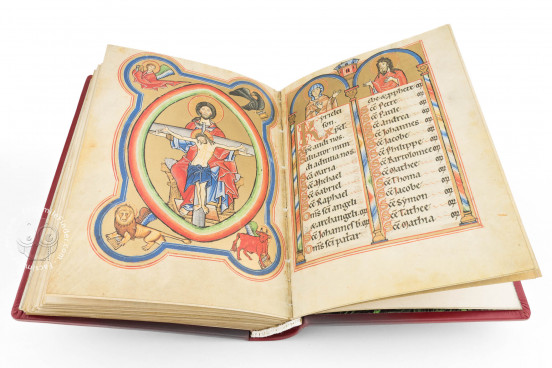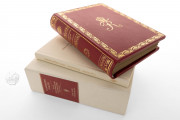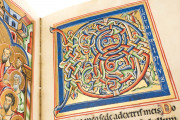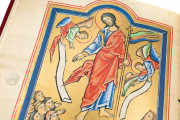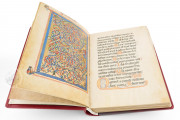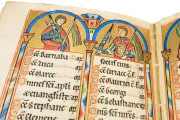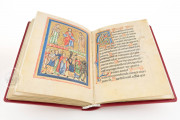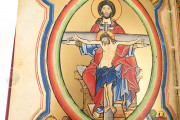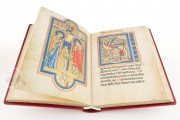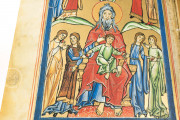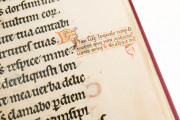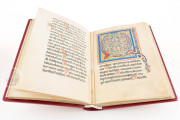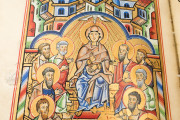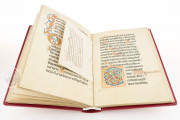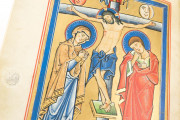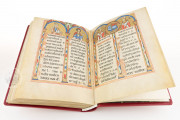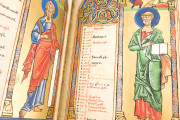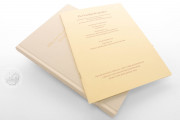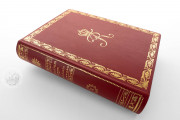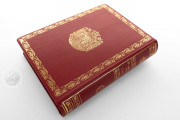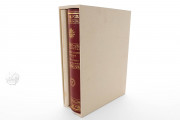The Landgrave Psalter is a carefully calibrated commission that reflects the wishes and aspirations of its patron, Hermann I, Landgrave of Thuringia, and his wife Sophia of Wittelsbach. An astounding masterpiece of illumination, the book reflects one of the most culturally dynamic courts of early thirteenth-century Germany. Intended for the Christian devotional use of its first owners, the book is renowned for its eight full-page miniatures of scenes from the life of Christ, its thirteen large painted initials, as well as its lavish decorative treatment of the calendar and the litany.
The manuscript's components and their layout follow the structure commonly found in the genre: the biblical psalms are preceded by a calendar and followed by Old and New Testament canticles, a litany, and other prayers in Latin.
Remarkable Calendar and Litany Decoration
The pages of the calendar (fols. 1v-7r) and the litany (fols. 173r-176r) have painted architectural surrounds of brilliant color with gold backgrounds. Each month of the calendar occupies a page divided into two columns by a painted arcade. Monumental standing figures of the twelve apostles and vignettes of the labors of the months occupy the right columns. A gallery of portraits of saints and others occupies the arcade formed of the litany's painted architecture.
A Favorite Scribe
The ostentation of the psalter extends to its beautiful text, with its large painted initials and minor initials in gold. The text was written in Gothic Textualis by a single scribe who also produced the Saint Elizabeth Psalter (Cividale del Friuli, Museo Archeologico Nazionale, MS CXXXVII), also commissioned by the noble couple.
Hermann, Patron of the Arts
Landgrave Hermann is renowned for his patronage of literature. He was a significant supporter of the translation of texts of Greco-Roman antiquity into German. He seems to have had a great personal interest in the literary and artistic projects he generously funded.
Hermann and his wife Sophia, as well as prestigious relations and allies of the couple, are depicted in the litany (fols. 174v-176r), highlighting Sophia's bloodline and placing them in the company of Christian saints.
Subsequent Monastic Ownership
Little is known about the location of the manuscript before the seventeenth century. The psalter was temporarily at Marienberg abbey near Mals at the crossroads of the Austrian, Swiss, and Italian borders and reached Weingarten abbey in Swabia before 1628. The book was transferred as a part of the monastic library to the Stuttgart Hofbibliothek sometime between 1810 and 1811, whence it entered the Landesbibliothek.
We have 1 facsimile edition of the manuscript "Landgrave Psalter": Der Landgrafenpsalter facsimile edition, published by Akademische Druck- u. Verlagsanstalt (ADEVA), 1992
Request Info / Price

